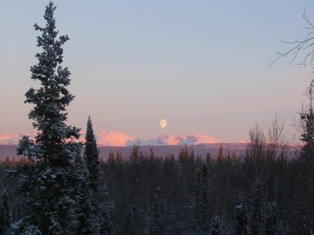Scribbit recently posted about her son, Spencer, reconstructing a mouse skeleton from an owl pellet at school. The story reminded me of similar things that I did when I was young. My best friend, who lived two doors up, had a cat that was always bringing home dead birds. One day we got the idea to bury the birds and wait until nature reduced them to bones. Then we would dig up the bones and put them back together. Why would we want to, you might ask? Because we would then have a really cool skeleton bird sitting on the bedroom shelf. To us, it was the only logical thing to do with the dead birds. Just giving them a proper burial would be such a wasted opportunity. Now we could combine the fun of treasure hunters, archeologist, builders, and mad scientists into one seemingly simple task.
So with much anticipation we buried our first bird in the woods behind my friend’s house. We even made sure to mark the spot, not with any kind of gravestone, but with an ‘X’ in the dirt. Then we waited, but boys’ attention span being what they are, we could never remember where or when to unbury the birds. That didn’t stop us though. With youthful optimism, we continued to bury the dead birds each time, completely convinced it would work out this time. We buried so many birds that it is a wonder that we never discovered a previously-burried bird while digging the hole for the next.
Eventually we did succeed in digging up one bird. We collected every bone we could find. There weren’t many. We dutifully placed them in a shoe box and then realized we had no idea what to do with the bones now that we had them. That didn’t dampen our spirits. We kept that box of bird bones as a prized treasure that some day we would get around to putting together. I don’t know whatever happened to that box with its bones. It quietly faded from memory. I suspect a mother helped it along its way.
The reason I am telling this story is to better explain my fascination with this story.
While listening to Alaska Public Radio recently, I heard a program entitled Do It Yourself from March 10, 2007. With my love of DIY, my interest was piqued and as I reached to turn up the volume the lead-in announced that one segment would be about rebuilding a 36-foot whale skeleton. Having read the story above, it should come as no surprise to anyone I was instantly awed and riveted to my radio as the desires of a lost project from my youth came alive again.
As the program unfolded I learned that Stacy Studebaker, a retired high school biology teacher, had discovered a 39-foot gray whale washed ashore near her Kodiak cabin. I totally related to her when she said her first thought was to rebuild the skeleton. "Who the heck was going to clean up the mess?" didn’t even cross our minds.
I listened with fascination at how over seven years and lots of help she essentially rediscovered the art of rearticulating whale skeletons. I won’t go into any more detail here, because Stacy Studebaker has a done a better job than I ever could chronicling the process step-by-step on her webpage. The project is now near completion and the skeleton will be housed in the new Kodiak National Wildlife Refuge Visitor Center, which is being built to specifically display the skeleton.
As the program ended, the DIY and biologist in me were stoked and I was left enviously wishing I could find a 39-foot whale washed up at my doorstep. Though this would probably leave my neighbors extremely perplexed, especially when I gleefully started digging a pit in my backyard.
P.S. I add "Link of the Week" over on the right, which will feature webpages that I want to share.
Subscribe to:
Post Comments (Atom)

1 comment:
A whale. Now THAT would be something. None of these stinkin' mice skeletons, bring on the big stuff.
Post a Comment